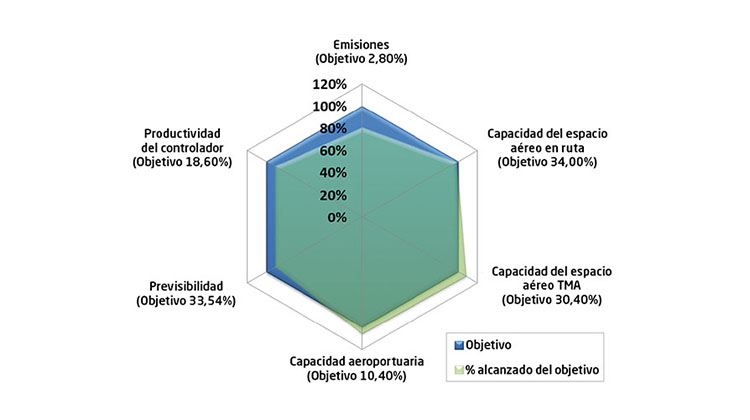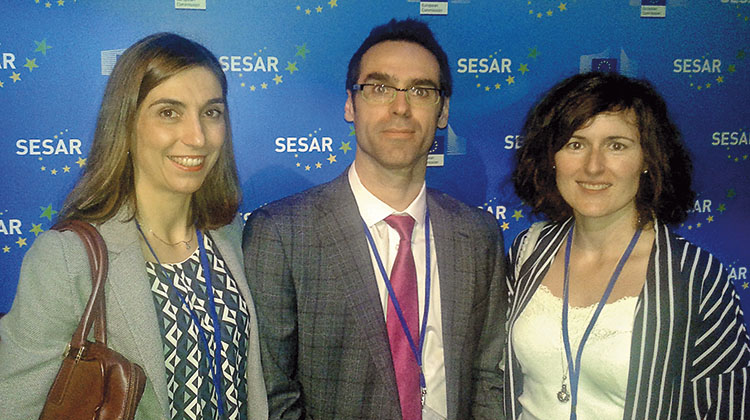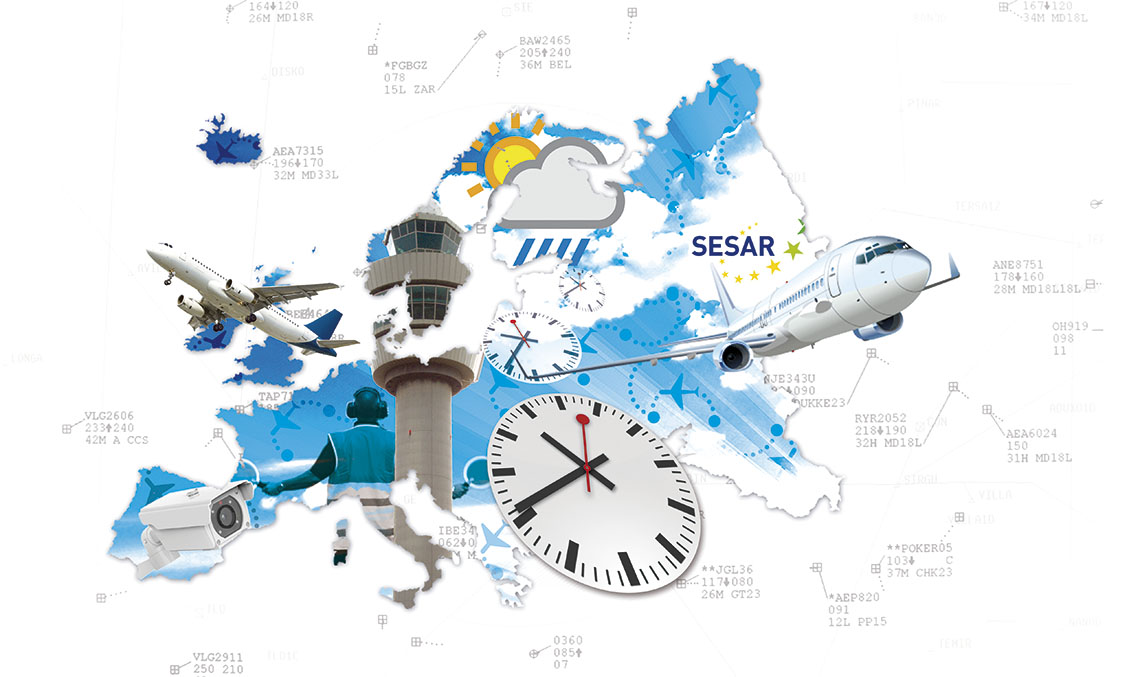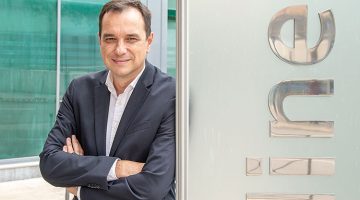December 2016 saw the completion of the first SESAR research and development programme, with a total of 63 Air Traffic Management (ATM) solutions, all with a shared goal: increasing the number of air operations, increasing safety, and reducing the costs and environmental impact associated to each flight, all priority issues for the EU. This was possible thanks to the combined work of airport managers, air navigation service providers, the aviation industry and airspace users. This was a fruitful collaboration as part of the company SESAR Joint Undertaking (SJU), a public–private partnership bringing together all Air Traffic Management (ATM) R&D initiatives in Europe. Founded in 2007, the company was created by the European Commission (EC) and Eurocontrol to coordinate the growing number of partners and to manage financial and technical resources, with a view to making the Single European Sky project a reality.
According to statements by the EC, SJU has met its expectations. The parties responsible for technological development for the future European Air Traffic Management system presented a total of 63 solutions at the end of 2016, defining standards, operating procedures, technology and pre-industrial components. These solutions were developed with a clear focus on subsequent deployment and implementation.
ENAIRE’S leadership
Together with its shareholder ENAIRE (formerly Aena), Ineco began participating in 2000 in the area of ATM in European R&D Framework Programmes, which were co-financed by the European Commission and ultimately replaced by SESAR JU to unite efforts, to avoid the duplication of work and to promote the deployment and implementation of the different developments. Since the development phase got underway in 2008, ENAIRE has participated in 95 projects (the programme includes over 300), taking a leading role in 16 of these. Ineco’s contribution to SESAR began in December 2010, with the company ultimately participating in 54 projects. Participation in SESAR has allowed us to keep up to date with the evolution of ATM technology and operations, putting this experience at the service of our clients and shareholders. Regarding this, it should also be highlighted that Ineco, jointly with ENAIRE, led WP6 Airport Operations, diferent kind of operational projects and also Operational Focus Area(OFA) in which projects were grouped assessing the same concept. The company also contributed in the development of operational concepts in the Network, Route, TMA and airport areas and in the coordination and execution of validations (both in fast and in real time) and the subsequent analysis of indicators from different perspectives (for example operations, economics, environment, safety and human factors).
Ineco experts also developed Touch It!, a tablet application enabling measurement of the workload of any human actor in their professional setting, whether this be aeronautics or not.

PLANNED OBJECTIVES. The hexagon in the graph above shows SESAR’s six proposed performance areas for measuring the success of the works carried out. The blue hexagon shows SESAR‘s initial targets, with the green one showing the high level of achievement reached by 2015, with a year still remaining for development.
SESAR deployment phase
In order to truly meet the objectives set, conceptual development of solutions is not sufficient. The industry must put these into production, at the same time deploying or implementing them. Similar initiatives in the past have not achieved this. However, there is now a body (the SESAR Deployment Manager) and a budget earmarked for making this happen.
The SESAR deployment phase guides and ensures the deployment of the developed solutions in a coordinated way within the European Union. As part of this, the EC published a regulation in 2014 called the Pilot Common Project, defining the first large-scale actions to be carried out in order that the technologies presented be available and put into operation. This is a mandatory regulation which all providers must put into effect in accordance with the implementation phases. This level of integration and information will also involve on-board equipment, manufacturers, flight personnel, controllers, airlines and the aeronautical industry as a whole.
What are the benefits? In addition to advances in terms of the safety of air operations and reducing fuel consumption, the advantages include interoperability and reduced operating costs. But above all, it is also a political achievement, a shared experience which confirms the movement towards a more united, collaborative Europe, gradually finding supranational systems to bridge the historical borders fragmenting and hindering the dream of a unified territory.

PRESENTATION OF PROJECTS. Form left to right: aeronautical engineers Ester Martín, José Manuel Rísquez and Laura Serrano, who attended the SESAR Showcase event on behalf on Ineco and representing ENAIRE. The event was held in Amsterdam on 30 June and featured presentations on the 63 solutions developed.
SESAR 2020: Second phase of development
Starting in October 2016, a second phase of development, SESAR 2020, is following suit, not only in launching the development of new solutions but also in completing the development of those that began in the first phase. This new programme presents a series of R&D projects, from early conceptual ideas to validation in operational settings for deployment. These projects are grouped into three large areas:
- Exploratory research, the most innovative part of SESAR, which is subject to open calls for projects.
- Industrial Research & Validation, where concepts offering significant ATM benefits are refined and validated. Only SJU partners and associate companies can participate.
- Very Large Demonstrations: projects included in the step prior to industrialisation and/or production, which are oriented towards validated concepts that require European or global coordination.
In the first development phase, there was a separation between operational projects and systems projects. This risk disappears in SESAR 2020, as each project includes a team of both operational and systems experts, with both groups being involved in the entire life cycle and development of the project: concept, requirements, validation, verification, etc. In addition, certain processes have been elaborated to ensure greater involvement from airlines, which are one of the most important actors in the world of ATM as they will be the users of the future ATM system developed by SESAR.
The members of SESAR JU
5 achievements
- Greater airport capacity. It has been possible for the first time to separate aircraft on their final approach by time (seconds) instead of by distance (nautical miles). The current distance-based separation of aircraft means the controller will apply fixed values, even in the event of strong headwinds. In these circumstances, a plane will take longer to travel the same distance; resulting in an ostensibly lower number of landings and consequent reduction in the airport’s capacity. However, with the new concept of time-based separation (TBS), airport capacity is retained even if there are strong headwinds.
- Free route. At present, airlines are generally obliged to plan their flights following previously published routes, which are not always the most efficient for their interests. SESAR developed the free route concept to enable airlines to design and plan the trajectory that best suits their business model.
- Everything in the cloud: Swim. Breaking the paradigm of the information exchange between two network actors without the participation of the other actors, system-wide information management (SWIM) is a concept created by SESAR which will allow all the real operational information of all aircraft at any stage (i.e. land or air) to be managed and shared to improve decision-making. It will be possible to upload/update data in real time, with this information being accessible by different user profiles with different access privileges, in this way ensuring the proper levels of confidentiality and safety.
- Remote tower. In small airports or airports in areas that are inhospitable or difficult to access, having a control tower can be too costly (due to control and maintenance personnel costs and equipment costs). However, the concept of remote towers makes it viable to manage operations at these airports safely and efficiently. So much so, that they have already been implemented. SESAR has developed reliable, safe technological solutions, including sophisticated cameras that can capture images even in poor visibility conditions. From a remote location, the controller accesses all the information he/she needs and communicates with planes without compromising operational safety.
- Air traffic control support tools. Information on all flights will become more accessible and precise. Sophisticated algorithms will enable controllers to predict further in advance whether any system node (i.e. the airport, airspace sectors) might become overloaded (in other words, whether the number of planes will exceed the recommended maximum for safe operation). Predicting overloading or other issues in advance makes it possible to plan their resolution with minimal impact on the development of air system operations. These systems will offer a catalogue of solutions to facilitate decision-making by the controllers or supervisors responsible for traffic management.






